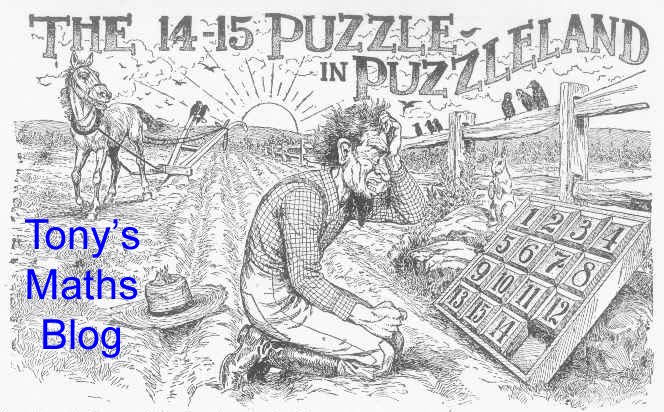The book concludes by presenting lots of interesting problems and their solutions. One is a version of the Josephus problem, in which fifteen out of thirty merchants are to be cast overboard to save an overloaded galley in a storm: the reader is given a mnemonic for arranging the merchants so that the right fifteen (the Christians rather than the Saracens, as one would expect for the time) are saved. The mnemonic is a Latin verse, which seems a little odd for a book whose selling point was that it was in English! Presumably the author was padding his book out with whatever came to hand, not very carefully, as we shall see.
Another example asks about travellers going in opposite directions between London and Paris and when they will meet, or at least I think that is the intention: but since in the book one traveller is going between Paris and London, and the other between Paris and Lyon, they are unlikely to meet unless one of them gets badly lost. It seems that our author was trying to make the problem more relevant to an English readership but didn't carry his intention through.
The most curious of the problems, to my mind, is "The rule and questyon of a Catte". The problem presented (transcribed from a 1546 edition) is,
"There is a catte
at the fote of
a tre
the lēght
of 300 fote /
this catte goeth
upwarde
eche
day 17 fote,
and descendeth
the nyghte 12
fote. I demaunde
in howe ōge
tyme
that she be at ŷ
toppe."
Or in today's spelling, "There is a cat at the foot of a tree of height 300 feet. This cat goes upward each day 17 feet, and
descends each night 12 feet. I ask, how
long a time will she take to reach the top?" It's good to see that even as far back as the sixteenth century, authors of maths textbooks were presenting realistic real-life problems to their students.
Luckily our author provides the solution:
"Answere.
Take by and abate the nyghte of
the day, that is 12 of 17 and there remayneth 5, there fore the catte mounteth eche daye 5 fote / deuyde
now 300 by 5 and thereof cometh 60 dayes then she shall be at the toppe. And thus ye maye do of all other semblable."
That is, "Subtract the night from the day, that is 12 from 17: this
gives 5, therefore the cat mounts each day 5 feet. Divide now 300 by 5 and you
get 60 days: then she shall be at the top.
And thus you may do all other similar problems."
Which is very neat and useful. But unfortunately the answer is wrong. After sliding down 12 feet on the 57th night, the cat will be at a height of 285 feet and will reach the top of the tree after 58 days, not 60.
What is curious about this is that the author seems to have missed the point of the puzzle. It is interesting, surely, only because it is a trick question, but the author has fallen for the trick. What has happened?
A historian friend with whom I discussed this had a plausible idea. The author was probably taking his problems from a continental book. This book may have presented the problem of the cat, and first derived the incorrect solution as above, but then went on to say something like, "But in fact this is not the correct answer, because ..." and explained the trick. However the unwary writer of An introduction ... didn't read any further, and reproduced the problem with the incorrect solution. Who knows how many generations of English students were bemused by their cats gaining the top of the tree two days earlier than they had calculated as a result of this carelessness?

